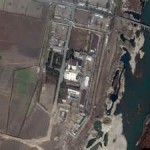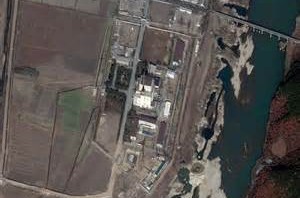Every government agency has more lawyers than common sense, meaning they are called upon to drum up legal advise to either not do something or to do it and in the case of a military response to the attacks in Benghazi, a boat load of various lawyers were called upon. Let’s go deeper.
For some background, directly after the 9-11 attacks on the United States, President Bush acquired a bi-cameral (joint) resolution to use military force in response to the attacks on the Taliban, al Qaeda and all associated affiliates wherever they were located at the time and in the future. This is called the AUMF. This is a standing authorization that has never expired.
Now in the case of Benghazi, Libya, NATO as a collective of member nations sought and gained a United Nation Resolution for a ‘no-fly’ zone in Libya which eventually led to the capture of Qaddafi but this resolution also included striking all of Qaddafi’s military weapons and any other cache of military grade arms including residual yellowcake inventories. The Libya operation did perform rather well at in fact striking what was known at the time Qaddafi’s arsenal. Upon the expiration of the UN Resolution which was October 31, it was determined that much of the weaponry was not destroyed or seized and this included the most deadly manpads of which there were an estimated 12-15,000.
The Senate voted for a mandate to the State Department under Hillary Clinton that an operation be deployed to capture these manpads due to the known threat of jihadists and al Qaeda factions working in Libya to steal these weapons bound for Algeria, Tunisia and most of all Mali. Hillary assigned $50 million to this operation and hence the Benghazi operation was underway. Working in close collaboration with the CIA, an annex was earlier established in Benghazi for this purpose and more meaning al Qaeda had several footprints in Northern Africa.
Now, lets move on to the fact that General Dempsey has said he and Leon Panetta did not have authorization to respond to the Benghazi attacks. Enter the lawyers. It is here that it must be known, the AUMF is a standing and enduring authorization which continues to be included in all annual NDAA law approved by the total Congress.
Additionally, the AUMF is a military mandate both in a proactive measure and in a defensive posture when it comes to al Qaeda and or any affiliates. We cannot overlook the fact that Barack Obama continues to give the Air Force and the CIA authorization for drone strikes wherever they may be located from Afghanistan to Pakistan, to Yemen and beyond. Barack Obama has said that drone strikes are used only as a last offensive measure when all other options are not viable, meaning boots on the ground to capture and detention, after all, we cannot put anyone in a prison detention least of which is Guantanamo. So we have drone strike de jour. Every drone strike by the way requires legal approval, meaning a lawyer sits beside the drone operator to process the Barack Obama kill list.
This brings us to Hillary Clinton and her radio silence of approval to dispatch to the Department of Defense a military response to the Benghazi attacks. We clearly know between the first attack and the second attack in Benghazi, Hillary Clinton drafted a communique stating the matter in Benghazi was a demonstration regarding a YouTube video. An email was issued by the State Department at 5:55 pm, on September 11, while the attacks were underway that Ansar al Sharia has taken credit for the attacks. This email also asked that the Libyan President and Libyan Prime Minister to please pursue Ansar al Sharia. A few hours later, Beth J0nes, the Acting Assistant Secretary of State for Middle East Affairs working directly for Hillary Clinton wrote an email to the Libyan Minister, time-stamped September 12, 2012 at 12:46 pm that the attack was at the hands of Ansar al Sharia. This email included the recipients of Victoria Nuland, Jake Sullivan, William Burns and Wendy Sherman.
Back to the lawyers, it appears that Hillary conferred with lawyers and interagency personnel to call the attacks only a demonstration as the AUMF/military response would NOT be authorize in the case of a demonstration but would only if an attack. Huge distinction and major sticking point when in fact, they knew it was an attack and who the murderers were at the very moment the attacks commenced.
The decision was made by the interagency personnel which included the DoJ, the NSC, the WH advisors, the Pentagon and the DoD to take a pass on responding to Benghazi as the live/realtime chats, critics and video feeds via the drone and the live video of the compounds security cameras spoke to the notion that Benghazi was a lost cause regardless of how long the attacks and looting went on. The alternate decision was made instead to protect the Tripoli embassy as it where all documents and robust State Department footprint is located.
In summary, the word demonstration vs. attack is the difference between authorizing a military response to save all American personnel and Libyan personnel hired by State working on behalf of the United States.
The operation in Benghazi was NOT to move weapons to Syria much to the opposition of many theories, it was to capture the weapons before they ended up in Algeria, Tunisia and most of al Mali. For reference, go to page 2 second to the last paragraph here.
Now we understand the blame of the video, it is the cover the Barack Obama regime and Hillary Clinton have embraced to keep a light and hidden and obscure presence in Libya while the remainder of Qaddafi weapons caused huge collateral damage in Mali.
The lawyers parsed the authority and go orders and gave deadly advise.










